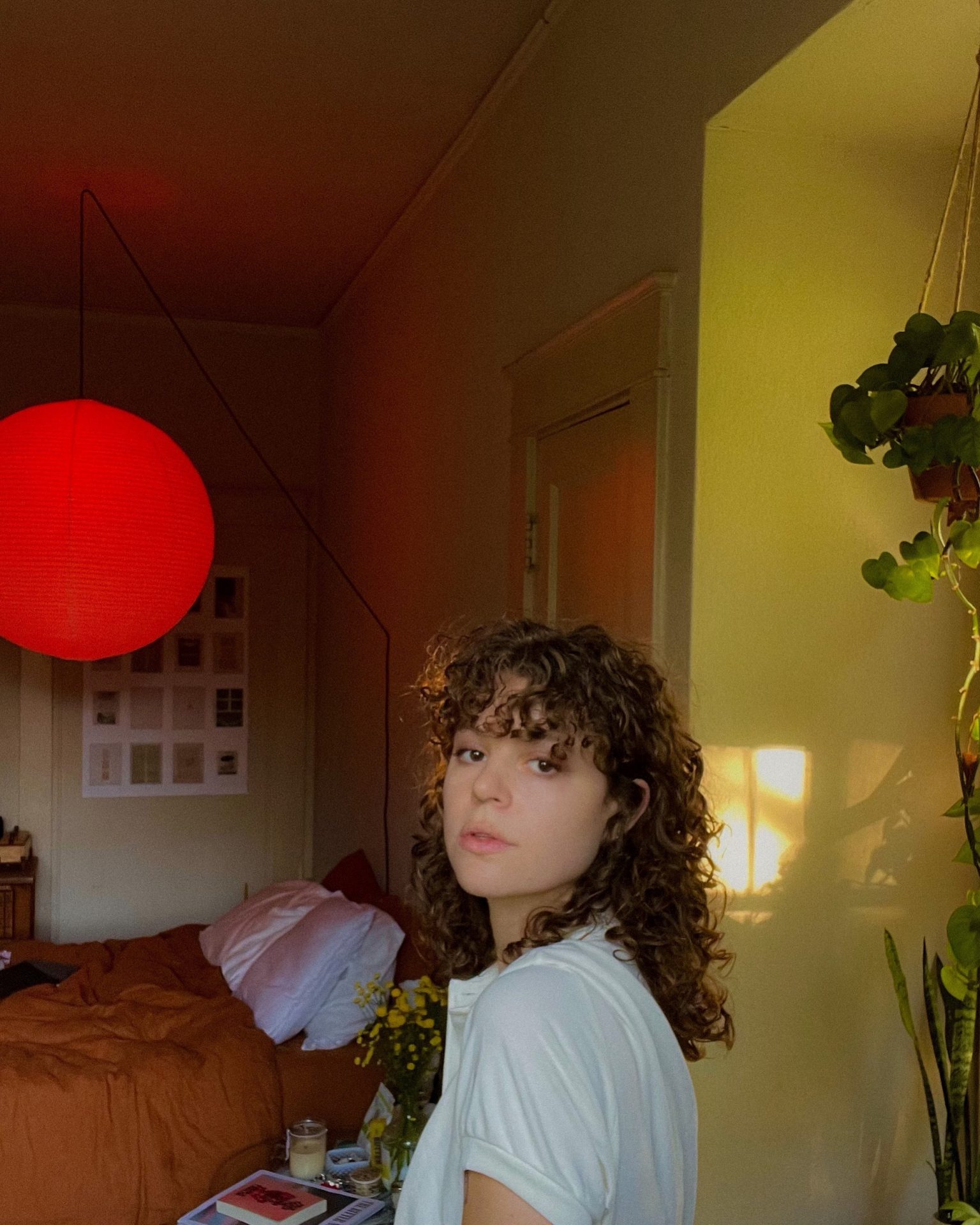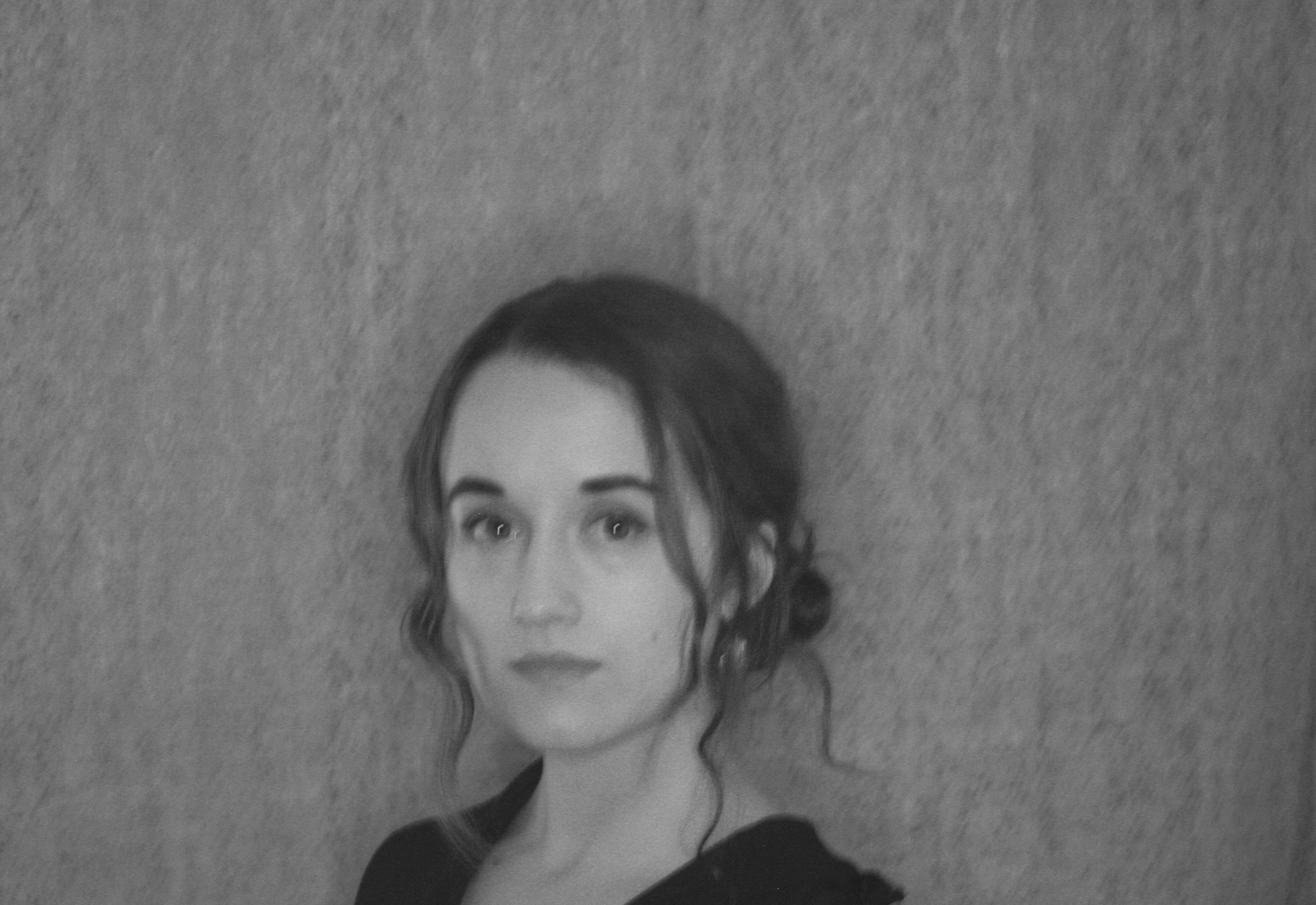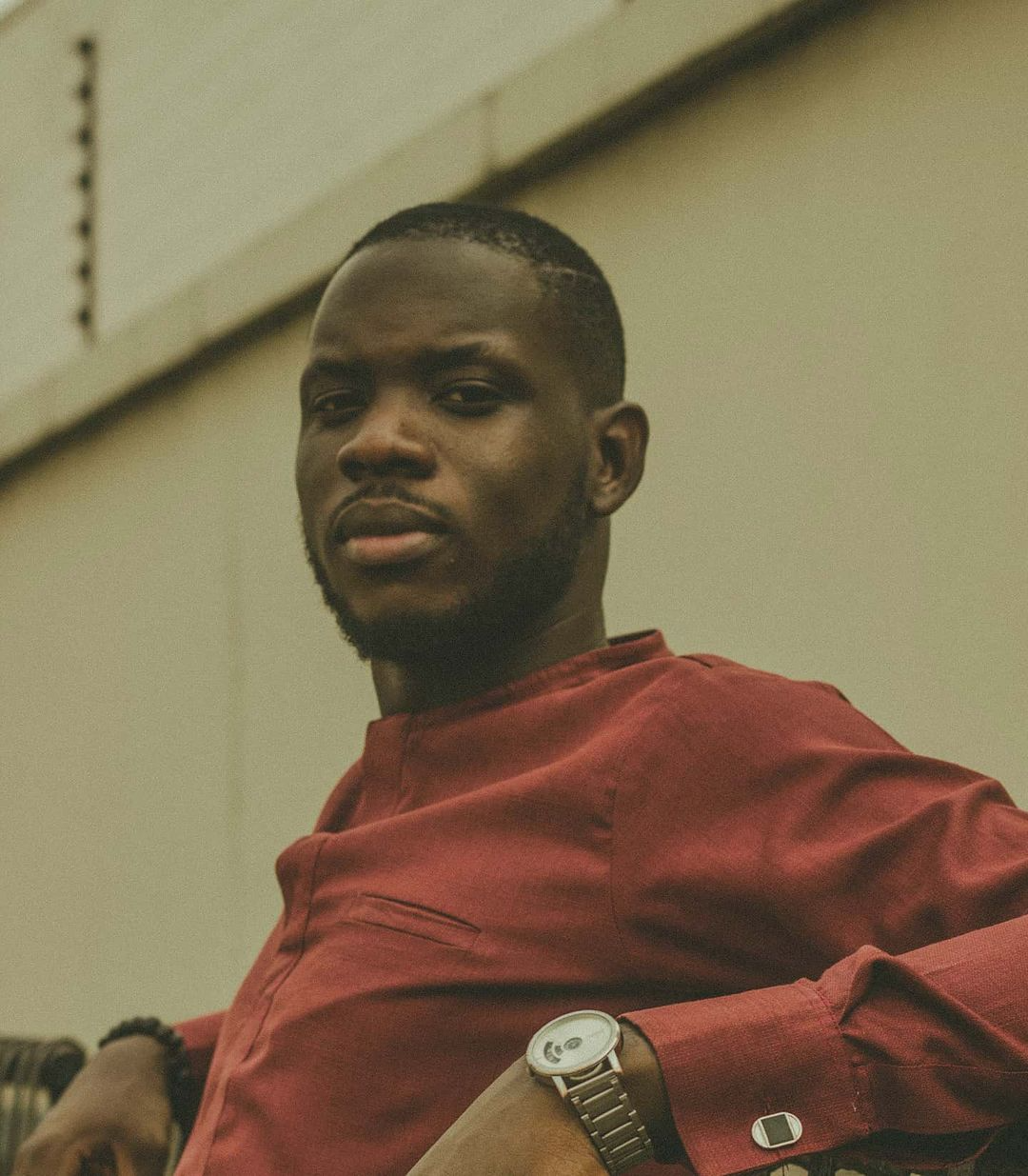- Meet the 2023 Editors: An Interview

Jeremy Rock / Managing Editor

Katie DeLay / Editor

Samantha Bolf / Fiction Editor

PD Edgar / Art & Design Editor
Javier Sandoval / Poetry Editor

Kanyinsola Olorunnisola / Nonfiction Editor
Each year, the BWR staff turns over, so we thought we’d take this opportunity to introduce the 2023 Masthead. We took turns asking and answering questions, often answering our own questions. Enjoy 🙂
KO: If you could trade places with anyone, whose literary career would you want to have and why?
JR: Despite my inability to write long fiction, I have to say Neil Gaiman. Still one of my favorite live events I’ve been to was an outdoor night of him reading and telling stories. So many incredible works, and Neil somehow manages to be a universally beloved cryptid wherever he appears.
SB: Stephen King.
PDE: WOOF. Any writer who was just famous enough to be well-respected and have an influence on the world, but just obscure enough not to be stopped on the street and asked, “wait, are you x?”
JS: Any independent artist sustaining themselves with their own unique art inspires me. Seth Rogan producing his own niche of movies, Bones publishing like 6 albums a year cause he wants to, Chuck Palahniuk writing at leisure, Fran Descher chilling after making The Nanny.
KD: Mary Ruefle, every time, Mary.
KO: What’s your comfort social media content? (eg cat videos, funny fail memes).
JR: Day to day, pictures of vistas – but I am a connoisseur in using quiet Let’s Plays of old games as background noise.
PDE: The “Afffirmations” Instagram account. I’m sure many of my “Close Friends” have muted my stories by now by the amount that I’ve reposted memes like “I suddenly just / love my hometown” or “I am not so / alone after all”
JS: A cowboy cooking grub outside.
KD: I like the cacophony of videos delivered to me by Tiktok. Someone sewing their own clothes, a DIY home renovation, and then, miraculously, a kitten standing on its hind legs. Variety is the SPICE of LIFE.
KD: What is a piece of writing that you wish you wrote?
PDE: I keep recommending this erasure in DIAGRAM. It’s is one of the most artful I’ve ever experienced. Blackout poetry really took Tumblr and high school English classrooms by storm when I was a teenager, and I envy writers who take a formal conceit like erasure to its most artistic extreme, refusing just to black-/white-out the text.
KO: I will eternally be obsessed with Lidia Yuknavitch’s “Woven”. It is so heartbreaking and impeccably delivered. Obviously, I don’t wish to be able to relate to that kind of trauma, but there is something about the technique that reminds me of why I love her work so much.
JR: Jake Adam York’s “Hush,” from Murder Ballads. Sound-based conceit it sticks to, visually indistinct, nothing you need to look up. Words are chosen because they sound like their meaning. It’s a guide on how a poem can teach someone to read it.
SB: “What Resembles The Grave But Isn’t” by Anne Boyer; “The Gender of Sound” by Anne Carson; the entire oeuvre of Helen Oyeyemi.
JS: The western portion of Cathy Park Hong’s Engine Empire. Talent and grit.
KD: To answer my own question, Frank Bidart’s “Hunger for the Absolute.”
KD: When you’re not writing, what hobbies or other activities do you enjoy?
KO: Watching light-hearted TV dramedies/comedies.
JR: I can usually be found in one of four places: traipsing gravel, camera in hand; a stoplight; standing in front of the stove, stirring the wok; somewhere dark, reading emails. I’ve also written more based on video games than anything else.
PDE: I love putting all those merit badges I got as a Scout back to work, as if I had to renew them. Camping, Hiking, Swimming, Cooking, Dog Care, Citizenship in the World, etc.
JS: Watching sitcoms, noodling on guitar, smoking on the stoop by the stray cats.
KD: Again, answering my own question: knitting, crocheting, sewing my own clothes. Taking photos. Trying to get my kitten, Sybil Marinara, to sit on my lap–but she’s always longing for the outdoors.
PDE: What was your entry point into the kind of work you want to do / are doing artistically right now? Who or What was it that proved to you, “oh, THIS is what (poetry/prose) can (be/look like)!”?
PDE: Documentary writers like Muriel Rukeyeser, Diana Khoi Nguyen, and Monica Ong, any work that’s somehow ekphrastic and critically fabulating and tenderly, firmly true all at once. Also, some of my peers here at Alabama.
JS: I’m struck hardest by works that reveal the nuances and complexities of difficult themes through innovative ways: Dostoevsky’s Notes from the Underground, Poe & Gogol’s magical-realist horror stories, Hollinghurst’s queer and satirical Swimming-Pool Library, Stanford’s Southern poetry collection What About This, and Senna’s racial thriller Caucasia.
KO: I have probably had a million of those moments, considering my artistic goals change every few years. At this moment, I would say I am drawn to what Teju Cole does with his essays, the language, the intelligence. He is my major point of reference for my current nonfiction project. Teju and of course, my literary lover, James Baldwin.
JR: I have always loved speaking as a historical character, or one created by someone else. First, that was learning from Caitlyn Siehl’s modernized Greek myths, moving into Elizabeth Bradfield’s Approaching Ice that voiced polar explorers. From there, Catherine Pierce and Jessica Jacobs kind of taught me to say, “Hello, I am a concept and we live in a strange place.”
KD: When I read Milkman by Anna Burns, I felt that literary fiction would never feel the same to me again. In the world of poetry, Forrest Gander’s Be With taught me how to grieve, and it gave an economy of words to prior experiences of grief.
PDE: What piece in the 49 volume of BWR are you most excited for readers to experience? What do you hope there’s more of in volume 50?
JS: That one banger written by a high schooler. I’m also excited to publish more poems that show nuanced forms of comedy or spirituality.
PDE: As Art & Design Editor, I’m most excited for art accepted off our queue, specifically, a comic (the first in several issues!)!
JR: Oh, I am long past choosing single favorites for anything – I couldn’t name my favorite song off any album I regularly listen to. My vote for the pile of Issue 50 wishes goes to either monochrome art or poems in subtle, invented forms.
KD: As the poetry editor for issues 49.1 and 49.2, I have many pieces I’m excited to see in print. 49.1’s “godinthewall1” by Tyler Raso and Porsha Olayiwola’s “I Make Love Like a Sea Creature” are among my most anticipated pieces–these poems were immediate yeses for me. In 49.2, Jaz Sufi’s “Poem in the Voice of Thirty to Fifty Feral Hogs” and Mitchell Jacob’s “Two Truths and a Lie” felt like they belonged in BWR from the moment I read them. To all the poets whose poems are in 49.1 and 49.2––it’s been an honor to find a home for your pieces in BWR.
JR: Are you more likely to include in your work something you’ve seen once, or something you’ve seen many times?
KO: I get inspired too easily, so I only need to encounter something once before I start considering incorporating it into my work somehow.
JR: Absolutely the thing I’ve seen a hundred times, but this time is a little different.
PDE: The constants. Life feels swirling to me, but there are certain rocks, or posts, to which everything else is staked. A lot of my work recently is me trying to stake myself down on these things.
JS: Both? Whatever’s striking yet familiar.
KD: Both. The moment of a single instance or image makes the rote memory of its context sing. And vice versa.
JR: It looks like it’s my turn to ask the trope question! What’s a story arc trope (of any length) that always gets you invested? As in, what do you enjoy seeing a character look for?
KO: I like stories in which characters descend into disillusionment, where they start questioning their place in a world that once meant something to them. I’m thinking of No Country for Old Men.
JR: I love immortal characters trying to make meaning of a too-long life. Karen Russell’s “Vampires in the Lemon Grove” and Yoshitoki Ōima’s To Your Eternity come to mind as great examples, but I’ll love any staunchly animated heap trying to find its way.
PDE: Most of the fiction I’m consuming currently is cinematic, but any time there’s a child-parent separation, for worse or for better, it’s curtains for me. Lady Bird’s mom dropping her off at the airport? Cassian Andor’s adopted mom saying “you can’t stay, and I can’t go”? When Leo and Sarah leave her parents on the freeway in Deep Impact?
JS: The very gradual transition from Villain to Lover!
KD: I love a highly idiosyncratic narrator, like Selin in Elif Batuman’s The Idiot and Either/Or
SB: in your opinion, what are the top 3-5 books in your genre—as in, the books that you would recommend to someone if they were interested in getting into poetry, fiction, etc?
KO: I don’t know if there is such a thing as an objective list of top books in my genre but if I were to recommend five nonfiction books, off the top of my head, I would say: Known and Strange Things by Teju Cole (for the language), Lives of Great Men by Chike Frankie Edozien (for its depth), Citizen by Claudia Rankine (for the insights), The Chronology of Water by Lidia Yuknavitch (for the heartbreak), and Born a Crime by Trevor Noah (for…everything) .
PDE: HAHA The art and comics I’d recommend? I feel like the canon for literary graphic novels are Art Spiegelman’s Maus, Marjane Satrapi’s Persepolis, and Alison Bechdel’s Are You My Mother?, and then Lynda Barry’s One! Hundred! Demons! But I grew up in a family that collected Peanuts, Calvin & Hobbes, and FoxTrot, and had a big bound edition of comic strip folios from the 1930s or 40s.
JS: Bukowski’s Collected Poems mostly because it’s so easy to read. Stanford’s What About This. He’s got quite a handle on metaphors and similes, of dream-like pieces. C.D. Wright’s Steal Away, she’s my favorite Southern writer and has quite the range, she sets a good goal post.
JR: I don’t know anything about top in a genre, but I have a James Wright Complete Poems, and I’ve never regretted that. I’m also a fan of Ilya Kaminsky’s Deaf Republic, Sarah Barber’s Country House, and Emily Van Kley’s The Cold and the Rust.
KD: Marie Howe’s What The Living Do, Don Mee Choi’s DMZ Colony, and Jericho Brown’s The Tradition
SB: what is a controversial belief that you have about writing, reading, the practice of either? (example: you believe that writing every day is absolutely mandatory, or, conversely, you believe that writing every day is absolutely NOT mandatory and is in fact a little excessive, and so on).
KO: I know everyone says practice makes perfect but I think there is such a thing as a wasted writing session. This mostly applies when I write poetry or fiction but sometimes, I am so uninspired and so bored with what I am writing that the actual writing session makes me feel a little less in love with the art at that moment. So, I only write when I feel moved. Forcing it makes for a miserable experience.
JR: The more I read, the less I feel qualified to judge anything objectively. As a writer, you’re trying to create an audience. As editors, we’re trying to curate for an existing crowd. Our team collectively has a lot of knowledge and experience, but we’re ultimately just readers who want to share some exceptional work.
PDE: All writers should take an advanced course in communication/media ethics. Any writing meant to be circulated is by definition media– printed, handwritten, or digital– and if in this world we believe that media producers are autonomous, accountable moral agents, then so are poets, novelists, memoirists.
JS: Good writing comes from living a good life, or at least a bad one in the best way possible.
KD: When you can’t write a poem, write fiction. When you can’t write fiction, write nonfiction. When you can’t write nonfiction, write a poem. When you can’t write, make something you can hold in your hands, see in front of you. Nothing is ever wasted.
JS: If you couldn’t write in text (no fiction, poetry, or non-fiction) what would you write?
JS: A cozy sitcom that still deals with difficult subjects, with models such as Sex & The City, The Nanny, Monk, Parks & Rec, Cowboy Bebop, The Addams Family, and Friends.
KO: Definitely screenwriting. I love love love screenwriting. I love looking at different screenplays and the ways they bend the “rules” according to the specific writer’s whims. It is a very fascinating genre to read and write.
JR: Oh, easy – I’d love to come up with codex entries and audio diaries for games. The depth axis of worldbuilding is a fun place to work, and there are so many voices to try on.
KD: I think I’d do visual art before writing something else. I’m always *this close* to being a textile artist or photographer.
PDE: I liveeeee for the print and video collage artists online. The corecore girlies have me in a CHOKEHOLD. I’ve tried my hand at some 360-degree video and poetry in the virtual space, just because I believe the metaverse shouldn’t be a world poetry doesn’t exist. Someone should be there, bearing witness, not letting people escape. Maybe I’ll be on a virtual street corner in the metaverse preaching Mary Oliver idk
JS: What non-textual artist best represents your literary taste?
JS: The Coen brothers and their movies always get me thinking: their humor, their exploration of an entire world, their bittersweet resolutions. Big Lebowski I argue is the best comedic western of all time, and No Country for Old Men the best thrilling one.
KO: This is a little controversial but I love what Zack Snyder does with his work, especially what he was trying to do with the sort-of-axed DCEU. I like risk-takers. Unafraid to fail. Unafraid to piss people off with your artistic vision.
JR: I’m going to out myself and go with Abraham Pether, the painter born in 1756. Moonlight, calm waters, cookfires, sprawling verdure, and half-exposed domesticity somewhere between dusk and midnight? C’mon. That’s an aspirational bio.
KD: I’ll give three: 1. Ragnar Kjartansson’s “The Visitors” installation works in repetition in a way that I find incredibly grounding. 2. Nick Cave’s Soundsuits abstract the real and imagine in the concrete. And they’re stunning to see in person. 3. Ingmar Bergman’s Persona: a film of limitless conclusion and invention. Each time I watch it, it’s like the first time.
PDE: Listening to Gordon Hempton’s hour-long recordings of different habitats, you have no choice but to soak in a place. Enya from 1990 to 2000. Whoever maintains the trails at Hurricane Creek. The graffiti artist in Managua in 2018 that stencilled the portraits of the disappeared on the walls of the Avenida Gabriel Cardenal.
Jeremy Rock assembles poems in Alabama. He has work published in Poet Lore, The Shore, Ninth Letter, Flyway, Cartridge Lit, and elsewhere. He is usually following backroads or dirt trails with a camera, and you can find him @jeremy__rock.
Katie DeLay (she/her) is a poet from Tennessee. Her latest work can be found or is forthcoming in The Ekphrastic Review and Quarterly West. She’s a Virgo Sun, and this helps her reply to emails and color-coordinate her bookshelf.
Samantha Bolf is a second-year MFA student at the University of Alabama. She writes horror, or something like it.
P.D. Edgar is a writer and print layout artist from Lakeland, FL via Managua, Nicaragua. He’s completing an MA in Journalism and Media Studies and his Creative Writing MFA at Alabama. His work, which is concerned with nationality, religion, and online culture, is published in Ekphrastic Review and forthcoming from Ghost Proposal (and, in your hands, whenever you buy a book or journal he designed).
Kanyinsola Olorunnisola is an experimental writer of Yoruba descent. His work explores Black realities, the diverse ways his people navigate the world. He has been published in Al Jazeera, FIYAH, Popula, Jalada, Harvard University’s Transition and elsewhere. He is the recipient of the 2020 Speculative Literary Foundation’s Diverse Writers Grant, 2020 K&L Prize for African Literature, 2022 OutWrite Chapbook Prize, 2022 Best of the Net Anthology inclusion and a Truman Capote Literary Trust Scholarship, among others.